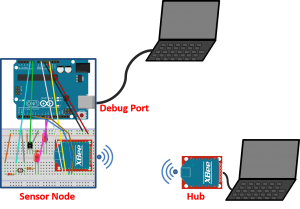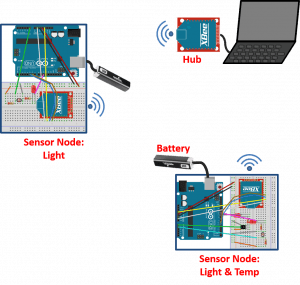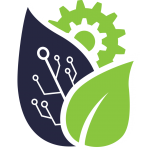Networking Infrastructure
Remote Monitoring and Control Systems
Overview
This module builds on the embedded systems module to detail the process of designing and implementing a system  that can monitor and control environmental conditions. We continue upon the theme of humidity & temperature control in a greenhouse by implementing radios to remotely connect to our embedded system, as designed in the previous workshop. In this module, participants will go through the process of configuring and programming both the microcontroller and radios to perform tasks, collect data, and wirelessly transmit data and commands without the need for a user to be physically present in the greenhouse. By the end of the module, students will be able to operate and manage a simple remote monitoring systems for their own projects.
that can monitor and control environmental conditions. We continue upon the theme of humidity & temperature control in a greenhouse by implementing radios to remotely connect to our embedded system, as designed in the previous workshop. In this module, participants will go through the process of configuring and programming both the microcontroller and radios to perform tasks, collect data, and wirelessly transmit data and commands without the need for a user to be physically present in the greenhouse. By the end of the module, students will be able to operate and manage a simple remote monitoring systems for their own projects.
About this Module
This module is available as an independent study or as for credit as CRSN 151C.
The lab manual is available for viewing and download to the right; in it you will find the details of each day with instructions and important terminology, as well as the equipment list with links for purchase if you would like to attempt these tutorials at home. Each workshop has its own prelab that must be completed before attending the relevant session. You'll be directed to online content and resources designed to give a basic understanding of what you'll be working on for that day, such as circuit simulation tools or an illustration of the different networking protocols. A key component of the prelabs is the use of a lab notebook. Make sure to bring the notebook with any questions you may have on the relevant prelab content to each session; it is important that you understand these concepts. Each day of the module will cover a different topic and will contain a postlab that must be completed on your own time before attending the next session.
Learning Outcomes
By the end of this module, students will have demonstrated familiarity and ability in:
- Good laboratory Environment, Health and Safety practice
- Arduino IDE and XCTU programming environments
- General understanding of communication and networking protocols, both wired and wireless
- Data Packaging and Transmission
- Understanding of networking topologies, both point to point and multipoint
- Application of tools for project management (engineering notebook)
The example use-case used throughout this Remote Monitoring and Control Systems suite of modules is a connected greenhouse or weather station. By the end of this workshop, you will have the foundation for wirelessly transmitting and receiving data regarding from sensors, selecting electronic components, and remotely monitoring and controlling embedded systems.
Workshop 2: Wireless Communication with XBees

Part 1: Wireless Communication
This session introduces students to the use of short range wireless communication to connect discrete embedded systems. Participants will learn the simplest form of wirelessly transmitting data using Xbee radios in point to point configuration. By the end of this session, you will be able to wirelessly communicate sensor data to a host computer for processing and display.
Part 2: Multipoint Networking
In this session, you will setup a more robust network with multiple sensor nodes in a star topology.
Part 3: API Mode
Using API mode for data transmission, we will configure our XBees to automatically recognize other nodes within the network and function in low power mode. By the end of the module, you will be able to deploy your sensor circuits for wireless control of your solar lantern or another LED based device.
Location
The module will take place in the S-Lab's main facility in the Thimann Labs room 368 and on the rooftop. Please sign in with the lab manager upon arrival.
Workshops are grouped into sessions which are available for sign up to the right. You may not sign up for individual sessions or split between different groups. Plan to attend all workshops in your session.
Before attending your workshop, please review the manual and complete the online training. You are required to complete the EH&S Lab Safety Fundamentals and the EH&S Electrical Safety in Research courses through the UC Learning website before beginning any work in the lab.
Resources

